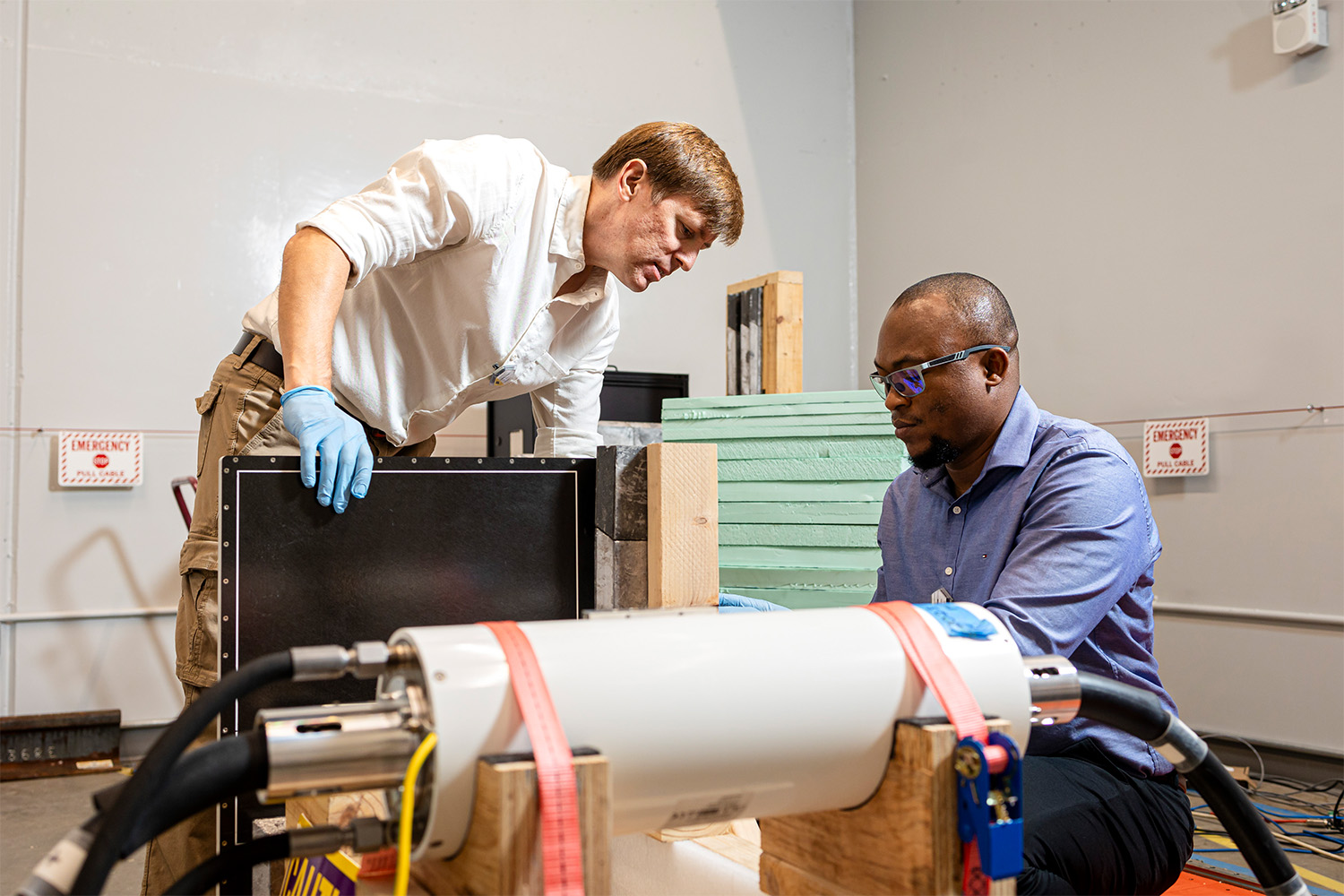By Izzie Gall. | Photography by Shawn Poynter.
The University of Tennessee is the lead institution for a $25 million cooperative agreement awarded by the U.S. Department of Energy’s National Nuclear Security Administration (DOE/NNSA) Office of Defense Nuclear Nonproliferation.
The Enabling Capabilities in Technology Consortium is led by UT and includes 15 universities and eight national laboratories. The consortium will receive approximately $5 million per year for five years.
The consortium has two objectives:
- to broadly educate and train a diverse and highly talented cadre of professionals with skill sets to support critical nonproliferation missions
at the DOE national laboratories and other nuclear-related fields, - to conduct mission-supporting innovation in close collaboration with its national laboratory partners.
“This new consortium funded by the Department of Energy will lead advances in global security, clean energy, and artificial intelligence that are especially critical to our nation and our world at this time,” said UCOR Fellow and Nuclear Engineering Professor Jason Hayward, the director of the consortium’s executive team. “In particular, our efforts will help produce the new knowledge and the diverse talented workforce necessary to enable the US and its allies to safely and securely triple nuclear power output throughout the world by 2050 and respond to emerging threats in space.”
Other schools in the consortium are Colorado School of Mines; Air Force Institute of Technology; Clemson University; University of California, Santa Barbara; University of Hawaiʻi; Louisiana State University; the Massachusetts Institute of Technology; North Carolina State University; the University of Oklahoma; Oregon State University; Texas A&M University; the University of Texas at San Antonio; University of Utah; and Virginia Polytechnic Institute and State University.

These eight national laboratories involved are Idaho National Laboratory; Lawrence Berkeley National Laboratory; Lawrence Livermore National Laboratory; Los Alamos National Laboratory; Oak Ridge National Laboratory; Pacific Northwest National Laboratory; Sandia National Laboratories; and Savannah River National Laboratory.
The mission of the DOE/NNSA is to drive innovative research that develops technologies and expertise to detect foreign nuclear proliferation activities and produces technologies for integration into operation systems by leveraging capabilities at national laboratories, plants as well as at universities and within private industry.
The main research thrusts of the Enabling Capabilities in Technology Consortium include fundamental science in earth, environmental, atmospheric and space science, as well as radio and nuclear chemistry, and applied science and engineering in areas of nuclear chemical engineering, advanced nuclear fuel systems engineering, and reactor systems engineering.

Connecting these thrusts are three cross-cutting areas: detection, characterization and response methodologies and tools; data science for nuclear nonproliferation; and education and training. Education and training in the first thematic area will leverage UT’s new bachelor’s degree in environmental engineering, the first such degree program in Tennessee.
The consortium has funding for 35 graduate and 26 undergraduate researchers per year and could potentially support twice that many students. The award is scheduled to begin in March of 2025.
“The state of Tennessee and the University of Tennessee have made outstanding investments in faculty and facilities over many years to enable us to be recognized as a leading institution in academic research and in the education of the future technical talent of the US national laboratories and other nuclear-related fields,” Hayward said. “In particular, UT’s Tickle College of Engineering has continued to attract many great people and to increase the breadth of its technical capabilities. This exciting success is evidence of its steady upward climb in prominence, impact, and ranking.”

